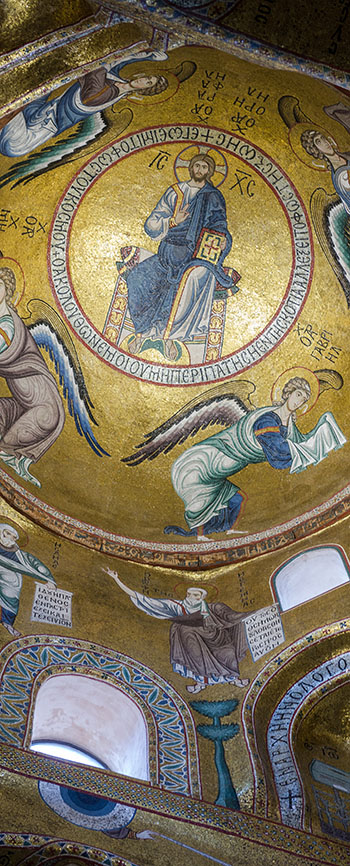
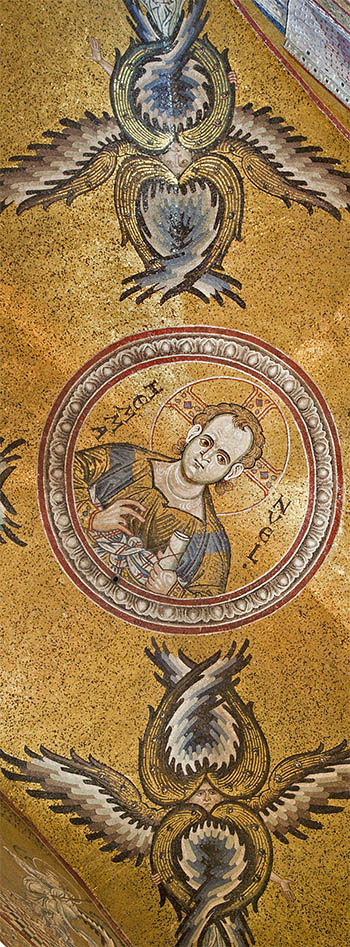
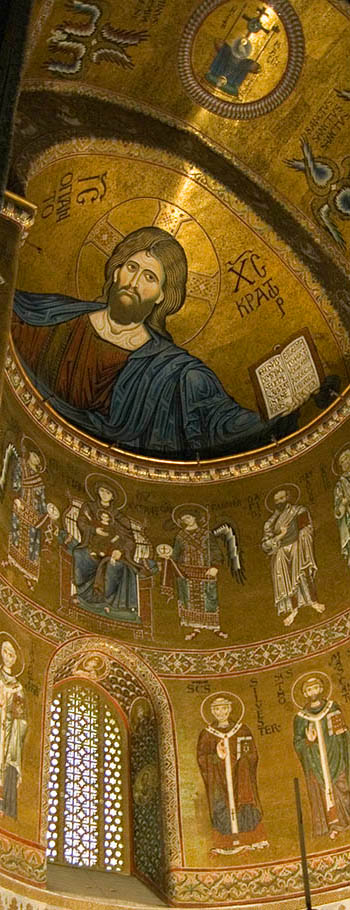

Icon Galleries: Saints
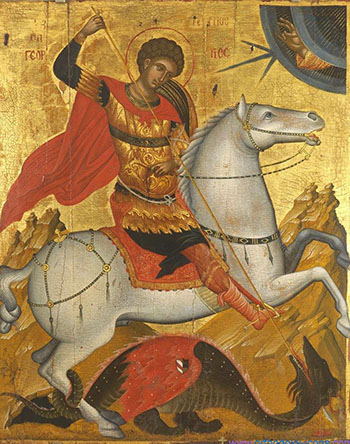 Hagia Sophia had hundreds of images of saints. There was a famous icon of Saint Mark of Egypt that was hung on the wall of the inner narthex, next to the door. You can still see the worn marks in the marble floor where people stood in front of it. The icon was hung from bronze hooks - you can still see them. Other icons were placed near these doors. They were described by pilgrims who saw them on visits to Hagia Sophia. We actually know quite a bit about the icons of saints in the church, for the pilgrims wrote their guidebooks for others who would visit the church. Besides painted or hanging mosaic icons there were also images of saints in the great tympana. A few of these survive in the lowest arches. Relics of saints were also displayed on the ground floor for pilgrims to see and venerate. The staff of St. John Chrysostom was placed on the wall of the left eastern wall nearest the altar along with an image of him. John had been a Bishop of Constantinople who was driven out of office. He made an enemy in Aelia Eudoxia, the wife of the Byzantine Emperor Arcadius, who assumed (perhaps with justification) that his denunciations of extravagance in feminine dress were aimed at herself. Eudoxia, Theophilus and other of his enemies held a synod in 403 (the Synod of the Oak) to charge John, in which his connection to Origen was used against him. It resulted in his deposition and banishment. He was later made a saint.
Hagia Sophia had hundreds of images of saints. There was a famous icon of Saint Mark of Egypt that was hung on the wall of the inner narthex, next to the door. You can still see the worn marks in the marble floor where people stood in front of it. The icon was hung from bronze hooks - you can still see them. Other icons were placed near these doors. They were described by pilgrims who saw them on visits to Hagia Sophia. We actually know quite a bit about the icons of saints in the church, for the pilgrims wrote their guidebooks for others who would visit the church. Besides painted or hanging mosaic icons there were also images of saints in the great tympana. A few of these survive in the lowest arches. Relics of saints were also displayed on the ground floor for pilgrims to see and venerate. The staff of St. John Chrysostom was placed on the wall of the left eastern wall nearest the altar along with an image of him. John had been a Bishop of Constantinople who was driven out of office. He made an enemy in Aelia Eudoxia, the wife of the Byzantine Emperor Arcadius, who assumed (perhaps with justification) that his denunciations of extravagance in feminine dress were aimed at herself. Eudoxia, Theophilus and other of his enemies held a synod in 403 (the Synod of the Oak) to charge John, in which his connection to Origen was used against him. It resulted in his deposition and banishment. He was later made a saint.
Many pilgrims came to Constantinople from different countries, especially Russia. The clergy of Hagia Sophia placed icons of Russian saints in the Church. Russians were amazed and pleased to find icons of saints like the princes Boris and Gleb in Hagia Sophia. Russia was a great source of money for the Church - from great princes to the common people. Hagia Sophia was a Patriarchal church - not an imperial one. The rulers of other orthodox countries recognized the authority of the Patriarch. All of the orthodox world was under his authority to different degrees. This should not be seen in the same way as the Catholic Church is ruled by the pope - the orthodox church is much looser in its organization and authority is diffused throughout its churches.
When Hagia Sophia was cut off from Russian money it suffered greatly. During the mongol period communication between Russia and Constantinople was often difficult, if not impossible. Later, in the 15th century, the church was badly maintained - its upkeep was enormously expensive. There was a huge amount of deffered maintenance of the cathedral in the last years. The Patriarch sent embassies abroad to beg for money. Oil and candles - the lighting of the church - was critical and cost vast sums. Other expenses were clergy, choir and the cleaning. Even in rich periods - like the 11th century - special sums of money had to be given for the running of Hagia Sophia. Although it was an essential objective of the clergy, even a single daily liturgy in Hagia Sophia was not always possible.
Below are some images of saints for you to look through - just click on one to see more.

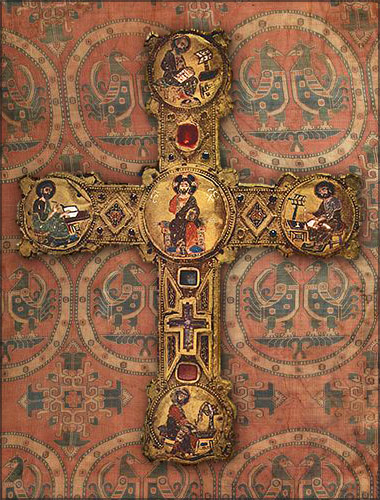

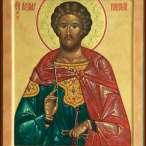
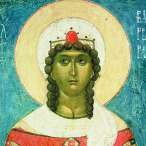
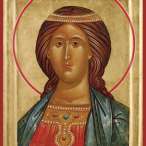
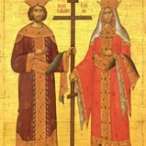
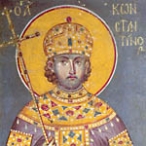
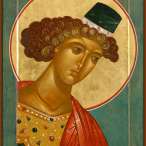
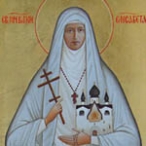
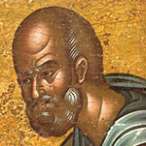
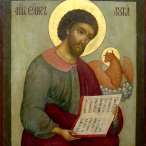
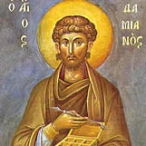
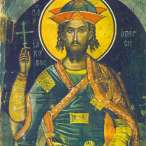
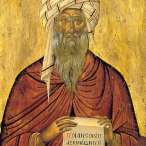
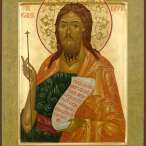
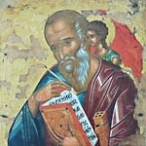
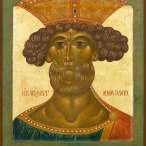
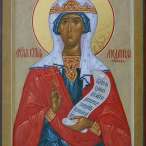
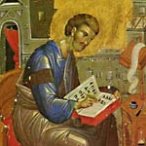
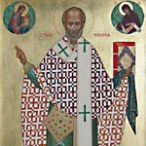
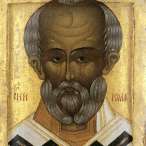
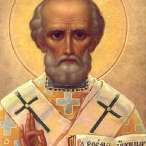
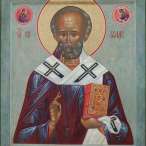
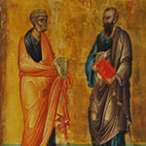
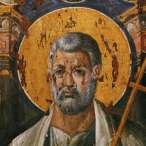
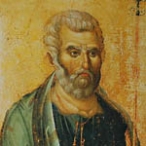
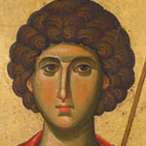
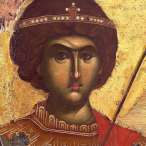
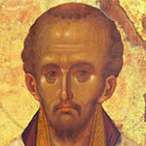
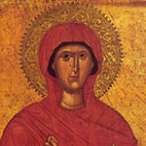
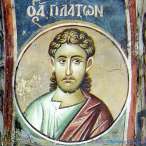
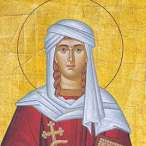
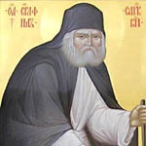
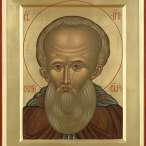
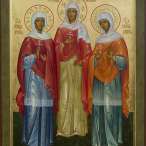
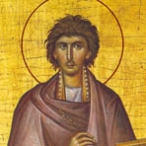
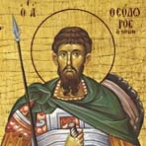
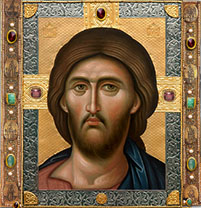 Christ
Christ 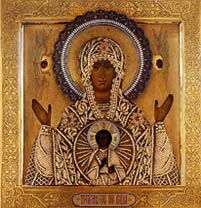 Theotokos
Theotokos 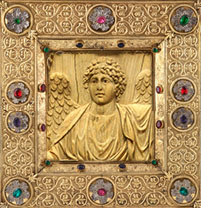 Angels
Angels 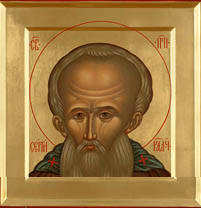 Saints
Saints 









